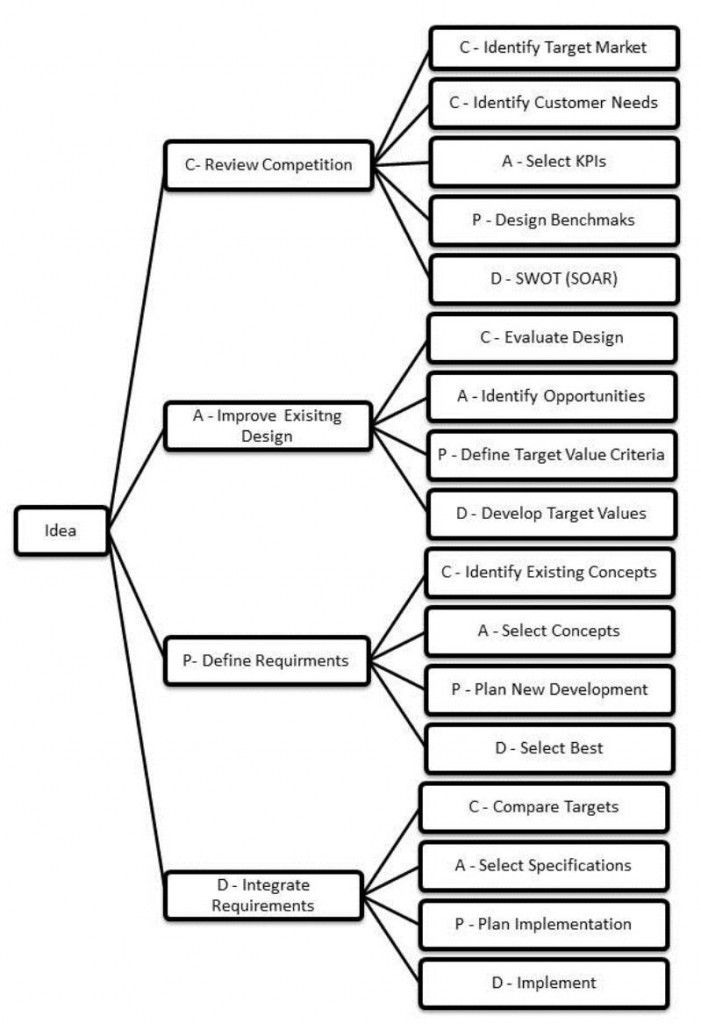Use CAPD instead of PDCA in Lean Design
A recent tweet on a book review by Steven Parry, referencing an old but actually still relevant book, Fourth Generation Management: The New Business Consciousness brought this back to my attention. I always wondered how many people started with check.
In the tweet Steven said,
Brian Joiner (close friend of Deming) states they always started at Check, act, plan do.
I often use PDCA as an outline for the development process, which may seem a little cumbersome to many. However, the approach is actually very similar to the The Lean Startup method that is seen as the latest and most current methodology for entrepreneurs. The Lean Startup is based on an approach that is called Build – Measure – Learn. At first glance this looks like like the cycle of PDCA without the planning. However, many have found that the Build – Measure – Learn struggled without a pre-planning stage or may started with Learn as the first step (See blog post, Process Control Thoughts).
Starting with Check is not a new phenomenon. I have 3 books that I have used for many years on Lean Product Development (listed at bottom of page) and one of them, Step-by-Step QFD taught me to use the PDCA process in design but start with the cycle of CAPD. Looking and Thinking correspond to Checking and Acting. This is our first step.
Paraphrased from the book:
The CAPD cycle can be used to identify the first-level tasks needed in design. The critical process for planning the design is contained in the branches of the tree (see below). Within the CAPD cycle, there are several tasks that must be completed. Each celment of CAPD must have at least one task. For instance, the Plan portion should include defining technology and concept requirements.
The CAPD cycle is used to identify the critical tasks for each of the major tasks in the critical process. These first-level tasks in the CAPD cycle require at least one second-level task. For example, there are five tasks for the first major task in the critical process:
- C – Identify target market
- C – Identify customer needs and expectations
- A – Select performance measures
- P – Design technical benchmarking
- D – Evaluate competition
Depending upon the steps in the critical process, the critical tasks can be different. For more complex design processes, it may be necessary to use the CAPD cycle again to identify critical subtasks.
Responsibilities must be assigned to the appropriate organizational functions. A responsibility matrix is useful for summarizing these responsibilities. The functional group which has the primary responsibility for a task determines when to move on to the next step in the critical process. The functional group which has secondary responsibility provides support to the group shouldering the primary responsibility. Job position or task description identifies who is responsible for which tasks. According to the developed critical process, an organization may need to acquire new responsibilities and to divide these among the functional units.
A product design process chart (project charter) should also be utilized to clearly define the team and the process. During product development, the design team needs many documents, such as market analyses, customer requirements and specifications. These documents arc normally regarded as reports within the design process. This process chart should provide the roadmap for managing your product. The more visual you make the process, the better. There is nothing wrong thinking of your process charter as a storyboard – something I encourage.
P.S. I often use the CAPD cycle when starting a customer conversation, looking and listening first is not all that bad of an idea. Related blog post: Sales and Service Planning with PDCA
Recommended Books:
Step-by-Step QFD: Customer-Driven Product Design, Second Edition
Mastering Lean Product Development: A Practical, Event-Driven Process for Maximizing Speed, Profits, and Quality
Lean Product and Process Development


Comments are closed.